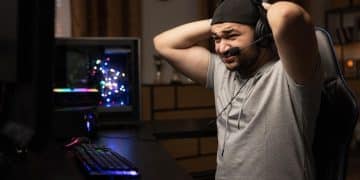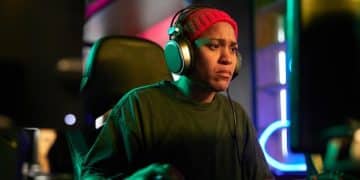Esports Training Regimens: How US Pros Stay at the Top of Their Game
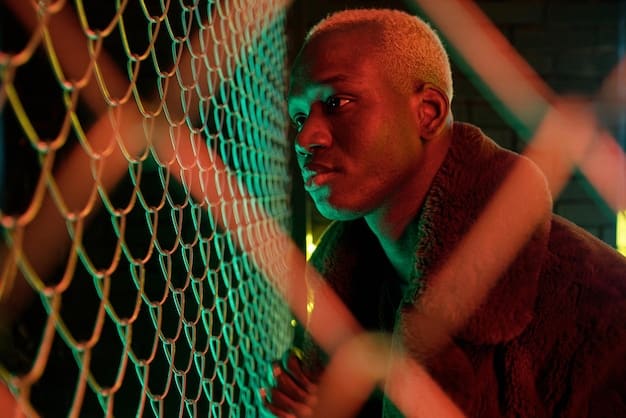
Achieving peak performance in competitive gaming requires US esports professionals to meticulously craft and adhere to rigorous training regimens encompassing skill refinement, mental conditioning, physical fitness, and strategic analysis to maintain their elite status.
In the high-stakes arena of professional competitive gaming, the margins between victory and defeat are razor-thin. Understanding the intricacies of Esports Training Regimens: How US Pros Stay at the Top of Their Game is crucial for anyone aspiring to reach or understand the pinnacle of this rapidly evolving sport. This exploration delves into the meticulous processes, disciplined routines, and multifaceted approaches that propel American esports pros to consistently perform at an elite level.
The Foundational Pillars of Esports Training
Professional esports training extends far beyond simply playing a game for many hours. For US pros, it’s a carefully structured regimen built upon fundamental pillars designed to optimize every aspect of their performance. This holistic approach recognizes that success isn’t just about raw mechanical skill but also about mental fortitude, physical well-being, and strategic depth.
At its core, individual skill development, known as “mechanics” in the esports lexicon, remains paramount. This involves repetitive drills, custom training maps, and focused practice sessions aimed at refining reflexes, accuracy, and in-game movement. However, the modern professional understands that mechanical mastery alone is insufficient.
Mechanical Skill Refinement
Each US esports pro dedicates a significant portion of their day to honing specific in-game skills. This includes aim training for first-person shooters, execution of complex combos in fighting games, or precise micro and macro management in real-time strategy titles. They often utilize specialized software or in-game tools designed to isolate and improve these mechanics.
- 🎯 Aim trainers: Programs like Aim Lab and KovaaK’s FPS Aim Trainer are ubiquitous in FPS communities.
- 🕹️ Custom maps: Many games offer user-created maps that simulate specific high-pressure scenarios for practice.
- 🔁 Repetitive drills: Executing specific movements or ability combinations countless times to build muscle memory.
Beyond individual mechanics, understanding team dynamics and communication is equally vital for team-based games. US teams spend countless hours on scrims (scrimmages) against other professional or high-level amateur teams, meticulously reviewing footage, and strategizing to iron out flaws and improve synergy.
Strategic Analysis and Game Knowledge
Another crucial pillar is game knowledge and strategic analysis. This involves in-depth study of game patches, meta shifts, character or item balance, and opponent tendencies. Pros analyze their own gameplay and that of their rivals, often with the guidance of coaches who specialize in tactical breakdown.
They delve into replays, identifying mistakes, understanding optimal decision-making, and developing counter-strategies. This analytical rigor ensures they are always adapting to the ever-evolving competitive landscape of their respective titles. The ability to predict an opponent’s next move or exploit a slight weakness is often the difference maker in high-stakes matches.
In essence, the foundational pillars of US esports training—mechanical skill, strategic analysis, and game knowledge—form a comprehensive base. They provide the framework upon which more specialized and nuanced training elements are built, setting the stage for the rigorous routines that define a professional esports career.
The Daily Grind: A Glimpse into a Pro’s Routine

The daily training regimen of a US esports professional defies the casual perception of gaming. It’s a demanding schedule, often mirroring that of traditional athletes, characterized by long hours, focused practice, and structured breaks. This “daily grind” is where the theoretical aspects of training are put into practice, manifesting as tangible improvements.
A typical day might begin with a dedicated ‘warm-up’ period, not just for in-game mechanics but also for mental preparation. This could involve aim training, simple deathmatch games, or reviewing VODs (video on demand) of previous matches. The goal is to get into the right mindset and ensure their mechanics are sharp before deeper engagement.
Structured Practice Blocks
The core of the day is usually divided into structured practice blocks. For team-based games, these are often lengthy sessions of “scrims”—practice matches against other professional or challenger teams. These are not casual games; they are treated with the seriousness of official matches, often recorded and meticulously analyzed afterward.
- 🕒 Morning Warm-up (1-2 hours): Individual mechanics, aim training, VOD review.
- 🗓️ Team Scrims (4-6 hours): Structured practice matches against other pro teams.
- 🗣️ Debrief/VOD Review (2-3 hours): Post-scrim analysis with coaches, identifying errors and refining strategies.
Individual practice continues throughout the day, often interspersed with team activities. This might involve exploring alternative strategies, perfecting specific character abilities, or grinding ranked ladders to stay sharp against diverse opponent playstyles. The consistent repetition, even on skills they seemingly have mastered, is vital for maintaining peak performance.
Breaks are meticulously planned, not just for physical rest but for mental recuperation. Professionals understand that burnout is a significant risk, and stepping away from the screen, even for short periods, can prevent fatigue and enhance focus when they return. These breaks might involve stretching, eating, or engaging in light non-gaming activities.
The Role of Coaches and Analysts
Coaches and analysts play an indispensable role in structuring and refining these routines. They observe scrims, provide real-time feedback, conduct in-depth post-match analyses, and help players identify blind spots or areas for improvement. Their expertise transforms raw practice into deliberate, effective training.
Without this structured environment and the constant feedback loop provided by coaches and analysts, the daily grind could easily devolve into aimless gaming. It’s the discipline, purpose, and expert guidance that elevate a pro’s routine from mere playing to highly effective training.
Beyond the Game: Physical and Mental Conditioning
While the focus of esports is undeniably on the virtual realm, US professional players increasingly recognize that peak performance originates from a holistic approach encompassing physical and mental well-being. This understanding has led to the integration of comprehensive physical and mental conditioning into their daily training regimens, elevating esports to a level comparable with traditional sports.
Physical fitness, once largely overlooked in the gaming community, is now a cornerstone for many pros. Extended periods of sitting, intense focus, and repetitive movements can lead to various physical ailments, from wrist pain and carpal tunnel syndrome to back issues and eye strain. Addressing these proactively enhances longevity and consistent performance.
Physical Fitness and Health Regimens
Esports organizations and individual players are investing in physical training that includes regular exercise, proper nutrition, and adequate sleep. Exercise helps improve blood circulation, reaction times, and overall cognitive function. It also combats the sedentary nature of professional gaming, preventing health issues that could sideline a player.
- 💪 Regular exercise: Strength training, cardiovascular activity, and stretching routines tailored for gamers.
- 🥗 Balanced nutrition: Diets rich in fruits, vegetables, lean proteins, and healthy fats to sustain energy and focus.
- 😴 Adequate sleep: Prioritizing 7-9 hours of quality sleep to ensure optimal cognitive function and recovery.
Many professional facilities now include gyms, and teams often employ dedicated fitness coaches to develop personalized training plans. Hydration is also emphasized, with players encouraged to drink plenty of water throughout the day to maintain cognitive sharpness and prevent fatigue.
Mental Fortitude and Sports Psychology
Equally critical, if not more so, is mental conditioning. The pressure in competitive esports is immense, with high stakes, large audiences, and intense scrutiny. Pros must cope with stress, manage emotions, overcome tilt (frustration leading to poor play), and maintain focus under duress. This is where sports psychology plays a vital role.
Many US teams now work with sports psychologists who teach techniques for stress management, visualization, mindfulness, and effective communication. These professionals help players develop coping mechanisms for losses, maintain confidence, and cultivate a growth mindset. They also address issues like anxiety, depression, and burnout, which can severely impact performance.
Tools such as meditation, breathing exercises, and cognitive behavioral therapy (CBT) are increasingly common among top players. The goal is to build resilience, allow players to perform optimally even when facing adversity, and ensure they remain mentally sharp throughout long tournaments or demanding practice schedules. This holistic approach ensures pros are not just mechanically skilled but also robust in mind and body, ready to face the rigors of competitive play.
Team Synergy and Communication Strategies
For team-based esports, individual brilliance can only take a team so far. The true strength lies in the collective, and this is achieved through meticulously developed team synergy and highly effective communication strategies. US esports teams dedicate significant time to cultivating these aspects, understanding they are often the decisive factors in high-level play.
Synergy isn’t just about players getting along; it’s about their ability to anticipate each other’s actions, execute complex coordinated plays, and adapt in real-time, often without explicit verbal commands. This level of understanding comes from countless hours of playing together, reviewing VODs as a unit, and discussing scenarios.
Developing Seamless Teamwork
Teams use specific drills and practice scenarios to improve their coordination. This might involve practicing specific rotations, objective control, or intricate ability combinations until they become second nature. The goal is to minimize hesitation and optimize response times, allowing the team to operate as a single, cohesive unit.
- 🤝 Coordinated plays: Drilling specific strategies for attacking, defending, or objective control.
- 🔄 Role clarity: Ensuring each player understands their primary and secondary responsibilities within the team.
- 🧠 Anticipation: Learning to predict teammates’ movements and intentions without explicit communication.
Beyond in-game mechanics, team-building activities outside the game are also integrated, helping players build trust and rapport. While not directly linked to gameplay, a strong personal connection can translate into better in-game chemistry and a more supportive environment, especially when dealing with losses or high-pressure situations.
Mastering In-Game Communication
Communication is the lifeblood of team esports. It’s not just about what is said, but how it’s said, its conciseness, and its timeliness. US teams train extensively on communication protocols, aiming for clear, concise, and actionable calls during chaotic moments.
This includes defining specific callouts for in-game locations, enemy positions, ability cooldowns, and strategic intentions. They analyze voice comms (communications) during VOD reviews to identify instances of miscommunication or missed calls. The objective is to eliminate ambiguity and ensure critical information is relayed efficiently.
Coaches often facilitate communication drills, sometimes even implementing exercises that force players to convey information under pressure or with limited words. The ability to communicate effectively, even in the midst of intense gameplay, allows teams to make split-second decisions and adapt to unexpected situations, turning potential losses into hard-fought victories.
The Cutting Edge: Technology and Analytics in Training
The modern esports landscape is deeply intertwined with technological advancements and sophisticated data analytics. US professional teams are at the forefront of leveraging these tools to gain a competitive edge, transforming subjective observations into quantifiable insights and personalizing training regimens like never before.
Every professional match and practice session generates a massive amount of data. This data, ranging from individual player statistics like accuracy and KDA (Kill/Death/Assist ratio) to team metrics such as objective control or vision score, is meticulously collected and analyzed. This allows for an objective assessment of performance that goes beyond mere wins and losses.
Performance Tracking and Data Analysis
Specialized software and in-house developed tools are used to track an array of performance metrics. These tools can highlight subtle trends, identify specific weaknesses in a player’s or team’s gameplay, and compare performance against benchmarks or direct competitors. For instance, an analyst might notice a player’s performance drops during specific in-game phases or under certain pressure conditions.
- 📊 Statistical dashboards: Real-time and post-game data visualization for player and team metrics.
- 🎥 AI-powered VOD review: Automated systems that highlight key moments, errors, or exceptional plays in replays.
- 📈 Predictive analytics: Using historical data to anticipate opponent strategies or meta shifts.
This granular analysis informs tactical adjustments and individual training plans. If a player consistently misses a particular skill shot, the data will pinpoint it, allowing for targeted practice. If a team struggles with a specific map strategy, the analytics can reveal why and suggest potential solutions. It’s a continuous feedback loop driven by objective evidence.
Simulation and Virtual Reality (VR) Training
Beyond traditional data, some organizations are exploring advanced technologies like simulation and even virtual reality for training. While still nascent, VR could offer immersive environments to practice specific scenarios, improve spatial awareness, or replicate high-pressure moments without being in a live game. This offers a safe space for players to experiment with risky strategies or perfect difficult maneuvers.
Simulation tools, less immersive than VR but already in use, can model different game scenarios or opponent strategies, allowing teams to “dry run” tactics and analyze potential outcomes. This iterative process of simulation, analysis, and refinement is a powerful addition to the training arsenal.
The effective integration of technology and analytics fundamentally shifts how US esports pros train. It moves away from relying solely on anecdotal evidence or gut feelings, placing training squarely on a foundation of data-driven insights. This allows for more efficient, personalized, and ultimately, more effective development of professional gaming talent.
Adapting to the Esports Ecosystem: Meta Shifts and Patch Cycles
The esports ecosystem is dynamic, constantly evolving with game updates, balance changes, and emerging strategies, collectively known as “meta shifts.” For US professionals, enduring success hinges not just on mastering the current game state but on their unparalleled ability to adapt swiftly and effectively to these constant changes. This continuous adaptation is a core component of their training regimen.
Game developers frequently release patches that introduce new content, balance existing characters or items, or fundamentally alter game mechanics. These “patch cycles” can drastically shift competitive strategies, rendering previously dominant tactics obsolete and elevating underdog approaches to prominence. Pros must be quick to understand and exploit these changes.
Analyzing and Exploiting Meta Changes
Upon a new patch release, pro teams immediately dedicate significant time to understanding its implications. This involves extensive testing of new content, analyzing changes to existing elements, and theory-crafting potential new strategies. They’ll run numerous controlled scrims to see how these changes play out in a competitive setting.
- 🔍 Patch analysis: Thoroughly reading and interpreting official patch notes.
- 🧪 Theory-crafting: Brainstorming potential new builds, character compositions, or playstyles.
- 🔄 Rapid prototyping: Quickly testing new strategies in practice environments to assess viability.
The goal is to be ahead of the curve, identifying the next dominant strategy before competitors do. This often involves sacrificing short-term wins in practice to explore and master what might be the winning strategy for upcoming tournaments. Coaches and analysts play a crucial role in predicting meta shifts and guiding the team’s adaptation efforts.
Responding to Opponent Strategies
Beyond official patches, the meta also evolves through community innovation and opponent strategies. A team might unveil a revolutionary tactic in a tournament, forcing others to adapt or find a counter. US pros are constantly studying their competitors, looking for novel approaches and developing methods to neutralize them.
This includes detailed “scouting reports” on opposing teams, analyzing their preferred strategies, player tendencies, and weaknesses. Training then includes practicing against these specific strategies, ensuring the team is prepared for a wide array of possibilities in
matches. This proactive and reactive adaptation ensures that US professionals remain flexible and innovative, ready to face any challenge the evolving esports landscape throws their way.
The Future of Esports Training in the US
The dynamic nature of the esports industry suggests that training methodologies will continue to evolve, becoming even more sophisticated and data-driven. For US esports, the future of training appears to be heading towards deeper integration of emerging technologies, personalized development paths, and a stronger emphasis on sustainability in player careers.
One significant trend anticipated is the increased use of artificial intelligence (AI) in training. AI could move beyond simple data analysis to provide personalized coaching, identify complex strategic patterns, and even simulate intelligent opponents for practice. Imagine an AI that can adapt to a player’s weaknesses in real-time, providing a perfectly tailored training environment.
Advanced Technological Integration
Virtual Reality (VR) and Augmented Reality (AR) are also poised to play a larger role. While perhaps not replacing actual gameplay, these technologies could create immersive training simulations for specific tactical scenarios, improve reaction times in simulated environments, or even provide holographic overlays during live games for tactical information. The potential for enhancing spatial awareness and strategic visualization is immense.
- 🤖 AI-driven coaching: Personalized feedback and adaptive practice routines.
- 🎮 Advanced VR/AR simulations: Immersive environments for tactical and mechanical practice.
- 🧪 Biometric feedback: Wearable tech monitoring player stress, focus, and fatigue during sessions.
Biometric tracking is another area of growth. Devices that monitor heart rate, eye movement, brain activity, and motor functions could provide real-time feedback on a player’s mental state and physical performance during high-pressure situations. This data could then inform personalized interventions, helping players manage stress or optimize their focus.
Holistic Player Development and Longevity
The future also holds a greater emphasis on holistic player development. As the industry matures, there’s a growing recognition of the need for long-term player well-being, extending beyond their competitive careers. This means comprehensive support systems that include mental health services, education, financial planning, and post-career transition guidance.
Training regimens will likely incorporate more cross-training and specialized physical therapy to prevent common gaming injuries, ensuring players can sustain their careers for longer periods. The focus will shift from just maximizing peak short-term performance to fostering sustainable, healthy, and prolonged careers in esports.
Ultimately, the future of US esports training is about creating a scientific and sustainable pathway for talent. It’s about combining insights from sports science, psychology, and cutting-edge technology to refine the art of competitive gaming. This evolution will not only push the boundaries of human performance in the virtual realm but also solidify esports as a legitimate and respected professional athletic pursuit.
| Key Aspect | Brief Description |
|---|---|
| 🎮 Skill Refinement | Pros dedicate hours to repetitive drills and custom maps to perfect mechanical skills like aim and reflexes. |
| 🧠 Mental & Physical | Beyond gaming, routines include exercise, nutrition, sleep, and sports psychology for resilience. |
| 🤝 Team Synergy | Extensive practice on communication and coordinated plays for seamless in-game performance. |
| 🤖 Tech & Analytics | Leveraging data analysis, AI, and VR to objectively track performance and provide tailored insights. |
Frequently Asked Questions About US Esports Training
US esports pros typically train for 8-12 hours per day, combining individual practice, team scrims, VOD reviews, and physical/mental conditioning. This intensive schedule demands significant dedication and discipline to maintain peak performance and adapt to the fast-paced competitive environment.
Esports coaches are crucial for strategic development, individual player improvement, and team cohesion. They analyze gameplay, provide tactical insights, facilitate communication, and help players maintain mental fortitude. Their guidance transforms raw talent into structured, effective training, mirroring coaching roles in traditional sports.
Yes, physical fitness is increasingly recognized as vital for esports pros. Regular exercise, proper nutrition, and adequate sleep improve cognitive function, reaction times, and overall well-being. This helps prevent injuries, reduce fatigue, and maintain focus during long practice sessions and intense tournaments, contributing to career longevity.
Pros adapt by immediately analyzing patch notes, theory-crafting new strategies, and extensively testing changes in scrims. They quickly identify new dominant strategies, develop counter-measures, and constantly watch for opponent innovations. This rapid and proactive adaptation is essential for staying competitive in dynamic game environments.
Mental training for esports pros often involves working with sports psychologists to develop stress management techniques, improve focus, and overcome “tilt” (frustration). Practices include mindfulness, visualization, and cognitive behavioral therapy. This training builds resilience, helping players perform under immense pressure and maintain emotional balance.
Conclusion
The journey to becoming and remaining a top US esports professional is a testament to unwavering dedication, constant adaptation, and a highly structured approach to training. Far from leisurely gaming, it’s a rigorous regimen that integrates mechanical skill refinement, profound strategic analysis, holistic physical and mental conditioning, and seamless team synergy. As the esports industry continues its meteoric rise, the sophistication of these training programs will only deepen, driven by technological innovations and a perpetual quest for marginal gains. This commitment to excellence ensures that US professionals remain at the peak of their game, continually pushing the boundaries of competitive gaming performance.
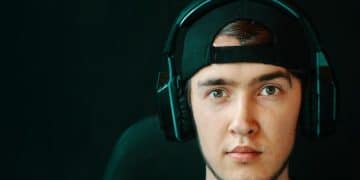
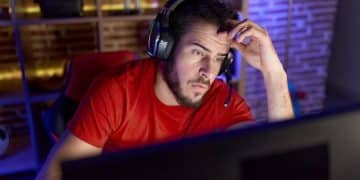
![Mastering [your chosen topic] in PC Gaming: A Deep Dive Mastering [your chosen topic] in PC Gaming: A Deep Dive - Cover Image](https://arcanenews.com/wp-content/uploads/2025/07/arcanenews.com_11_1753889991_8be9b385_cover-360x180.jpg)
